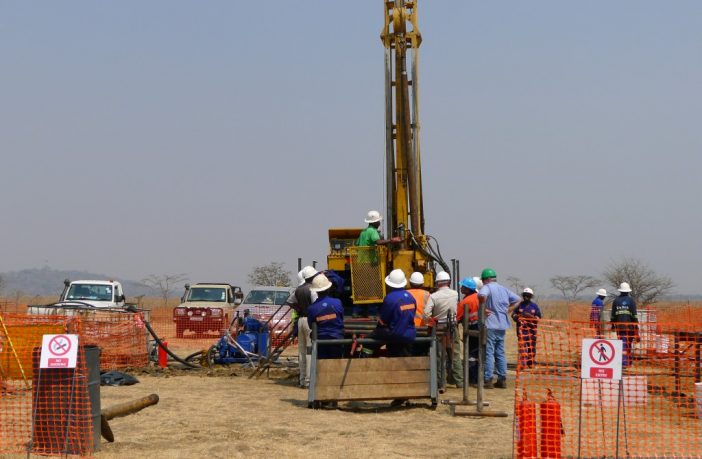- A Zambian geothermal exploration company, Kalahari GeoEnergy, announced the completion of the drilling of eight temperature gradient holes and the commencement of drilling slim wells at the Bweengwa River Geothermal Resource Area.
- A geothermal power plant works by tapping into steam or hot water reservoirs underground; the heat is used to drive an electrical generator.
The project forms part of the company’s resource delineation drill and well testing programme, which if successful will lead to a full technical and commercial feasibility study commencing late 2019. Bweengwa River is situated in the Kafue Trough, a sedimentary basin filled by the Permian-aged Karoo sequence, overlying metamorphic basement rocks; it is located to the west of Lusaka and extends westward into the Barotse Basin.
The company has to date identified six geothermal energy targets including Bweengwa River, on all of which it is conducting geothermal exploration. Peter Vivian-Neal, the CEO, commented: “Results obtained to-date continue to provide confidence that Bweengwa River has the characteristics of a viable geothermal resource for power production”.
“The current model of a 10MW or greater, power project, to be generated using binary technology, represents a significant step towards the company’s objective of producing geothermal power.
“Ultimately, geothermal power may provide a valuable component in Zambia’s drive to diversify sources of energy, increase generation capacity and the distribution of productive power as well as the ‘power to empower’ the community.”
The surface manifestations of the Bweengwa River Geothermal Resource Area include three groups of geothermal springs that extend over 9km and lie on the southern bounding fault of the Kafue Trough.
The resource area is 35km north of the Southern Province town of Monze and 200km from Lusaka.
Ongoing exploration has to date included geology, hydrochemistry and the drilling of 14 temperature gradient holes totalling 3,500m, eight of which have been drilled in 2019.
Results confirm a geologic setting conducive for geothermal hydrothermal systems and also give a strong probability of a medium-low enthalpy geothermal resource that can support a power generation project of at least 10MW.
Heat-in-place, power density and heat flow methods have been used, providing a consistent estimated usable resource capacity in the range of 10-20MW.
Bwengwa River Geothermal Resource Area
The Bwengwa River Geothermal Resource Area contains compelling evidence of the three key elements required for hosting a hydrothermal system: temperature, permeability and water.
Evidence for minimum reservoir temperature from 130⁰C to more than 150⁰C is provided by both fluid chemistry and already-drilled temperature gradient holes.
Permeability is confirmed by the discharge of the hot springs along the regional bounding fault and the associated geologic structures.
The reservoir is in fractured basement rocks within or adjacent to the basin-bounding fault. The source of water is local meteoric water that is plentiful.
Author: Babalwa Bungane
This article was originally published on ESI Africa and is republished with permission with minor editorial changes.















